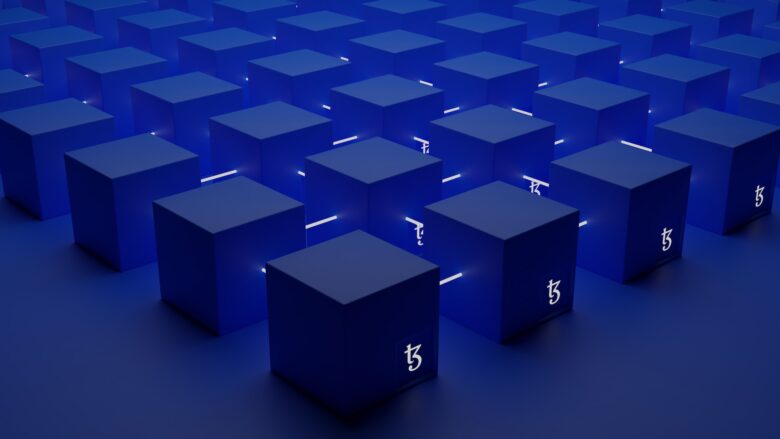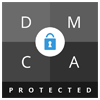With increasing globalization and the interconnectedness of most systems, blockchain technology offers a smart way of interacting with and solving problems. Blockchain has recently gained popularity because of its use in cryptocurrency, but this technology has manifold implications in a wide range of sectors.
As the world is becoming highly globalized and connected through the internet and media, blockchain takes the user experience a step further. It is considered one of the most secure and trustworthy approaches to establishing a smart economy.
Blockchain: The New Internet?
When the internet came into being in 1983, the common perception of it was just as a connection that would connect one person to another. People could perform different tasks and chat among themselves through an internet connection no matter where they were in the world. It was a revolutionary technology at the time, as connectivity and digital socializing were something that the world had never experienced before.
In the 1990s, people started investing in the internet and it eventually flooded the internet market with investors. The stocks were going up as the underlying technology had been unprecedented. Many internet startups bloomed and people invested in them. In 2000, the capital dried up and there was a market crash famously known as Dot Com Bubble Burst (Hayes, 2019).
After this market dip, researchers began diving deeper into other avenues the internet offered. Digital platforms, eCommerce, digital payments, online shopping and countless other productive tasks were discovered later that can be performed with the facilitation of the internet.
The perception of blockchain is not different from what people had perceived about the internet in the early 1990s. In today’s day and age, blockchain is at the same stage as the internet was in 1990. The hype for the underlying methodology and mechanism that it has to offer is uprising. The market for it is booming and a bubble of investments is forming. According to researchers, it will eventually burst just as it did in the internet market.
Research on blockchain technology has already been increased and technology enthusiasts have begun to understand its significance. People and states have already started acquiring cryptocurrency – virtual money backed by blockchain technology.
The Technology behind Blockchain
Blockchain technology is quite an advanced digital form of recording and processing data information. Unlike other data clouds, blockchain stores data in an unbreakable chain system – or on a series of digitally connected blocks. These blocks are connected with each other and contain information that is publicly stored in a decentralized form. It essentially means that the information stored is not just saved on one platform, but all over the connected series of supercomputers.
An important phenomenon in the blockchain is known as PoW, Proof of Work. It means that whenever new data enters or alters in a block, it requires a verification commonly known as mining. The data is available to everyone who is mining and when there is a change, it is verified by each and every connected peer to ensure a successful PoW.

In other words, any change in information ought to be updated on all the blocks. If there is a discrepancy in even one block, other nodes will reject the change in the blockchain network. In addition to preventing manipulation or alteration, users can access data from anywhere without any hindrance or permission from authorities. This interconnected and decentralized networking makes blockchain technology extraordinarily secure and reliable.
Diving Deeper into Blockchain & its Implications
In the 1980s, some researchers successfully developed a digital currency concept aimed at shifting from the current method of paper money, which varies from region to region, and has several regulations. In 2009, Satoshi Nakamoto, a pseudonym, successfully launched Bitcoin as the first product of blockchain technology, which was decentralized, digital, and accessible to local people using the internet all over the world (Farell, 2015). Over time, the popularity of Bitcoin increased exponentially and the key element in this unprecedented traction was its decentralized nature.
Ryan Farell, a researcher at the University of Pennsylvania, talks about decentralization and the security of this technology in great detail in his paper An Analysis of the Cryptocurrency Industry. Data in digital form is vulnerable to being copied and used more than once. Blockchain technology provides a secure approach to the issue that operates on a system of public ledgers.
Public Ledgers are the technological means of storing data by protecting identities securely and anonymously. The ‘block’ in blockchain refers to these public ledgers that contain all the stored information. These secure blocks provide a framework for cryptocurrencies to operate as daily-driven currencies used for trade in the economy.
Farell also suggests governments implement blockchain to replace previous financial systems. Since the idea of digital currency and decentralized data is fairly new and there are several pitfalls in its use cases, governments are hesitant to implement it in the economic systems fully. Another hurdle is that it is not yet standardized and cannot be traded for goods and services.
“For the currencies to be sustainable, their legal status must be established. Regulatory systems are burgeoning, with myriad approaches being taken by various governments. Current regulatory measures are in their infancy and continue to evolve with the rapidly expanding industry” (Farell, 2015).
However, countries are beginning to recognize the significance of digital technology. The United States has a permissive stance on this as California has the most cryptocurrency activity in financial markets and gained legal status in 2015. New York, likewise, is in the final stages of instituting a regulatory framework. Countries like Australia and Canada are also developing a taxation framework that will potentially support the use of Blockchain technology (Farell, 2015).
Remittance
Amine Soufaih’s paper Revolutionizing International Remittance Payments Using Cryptocurrency and Blockchain-based Technology highlights the use of Blockchain in International Remittance Payments. Transferring money from a foreign country is usually a very hectic process with several complications, including high costs and presence of several intermediaries (UN, 2019). The paper sheds light on different aspects of the remittance industry and its transformation through blockchain.
As mentioned earlier, the public ledger system allows transactions to take place with fewer complications and, at the same time, it has “the potential to process money transfers at a fraction of their current cost” (Soufaih, 2020). Different startups, such as Ripple Labs, Stellar, and Bit Pesa, are doing prominent work to revolutionize the remittance industry.
As for the operating mechanisms in the industry after the introduction of blockchain, Soufaih highlights that with this technology, unnecessary intermediaries can be bypassed, who partake in the traditional transfer process and charge extra fees.
Similarly, the efficient working of blockchain can skip the banking complications and streamline the transfer process that otherwise can take days in the execution process. Eventually, this will reduce the transaction cost and make the transactions instant, which can be received within seconds across the globe (Soufaih, 2020).
Healthcare
Nithin Revanna, a student and researcher at the Macquarie University, Sydney, Australia, in the paper Blockchain in Healthcare has identified the loopholes in the current system and provided a framework as to how this technology can revolutionize the process for patients, doctors, pharmacists, and respective authorities.
One of the recurring issues, particularly for doctors, is patients’ past medical history. The doctors usually recommend several tests to gauge patients’ current health status. This process is carried out regardless of the patient’s previous doctor’s testing.
“This situation is a result of failure in retrieving the patient’s data from another hospital, causing loss of time, patient’s money, and putting the patient’s life in danger” (Revanna, 2020).
For such an operational gap, blockchain can be a practical solution. A patient’s details and medical history can be stored on a ledger system. Upon the consent of the patients, doctors can access their data and streamline the entire healthcare procedure.
Revanna provides a framework highlighting the stepwise working of the blockchain healthcare system. First, the “healthcare service providers collect information from the patient.” Second, the data is stored in the database. Third, the database is linked to the respective ledger of the patient, eventually linking it to blockchain technology.
Once it is created, the patient decides who to give access and provide medical data (Revanna, 2020). Once access is provided, the data is available for the doctors to see and prescribe by looking at the patient’s previous trends and current status.
An important point to note here is that the implementation is more patient-centered, but it does not mean that the patient can alter or temper the medical records. The patient can only decide who is permitted access to the data. This solves the trust issues in the medical sector.
Similarly, the next time the patient visits the doctor, instead of new tests that may cost additional money, time and significant effort, the doctor will visit the database for all the information and can instantly diagnose the issue.
“The blockchain permits trust between organizations that will generally not confide in each other” (Revanna, 2020).
It will essentially allow different organizations within the sector as well as individuals to collaborate and operate more effectively without the need to consult third-party actors. Likewise, there is more transparency and lower chances of inefficiencies as many organizations have “redundancy, arbitrage, and resources squandered on rivalries” (Revanna, 2020).
This decentralized ledger information will enable cross-sector affiliations with inter-connected healthcare service providers who can work together for the patient’s needs. It will also empower patients to control their medical data and handle their overall health conditions (Revanna, 2020).
Real Estate
The real estate sector largely contributes to the economy and several people are linked via it. The paper Blockchain in Real Estate by Rai et al. (2020) delves deep into the complications of this sector and recommends Blockchain technology as a potential remedy. The problem statements identified in the paper mainly discuss the rampant problems in developing countries.
“Many citizens simply don’t have confidence in the system. Some are unsure if they legally own a piece of land, even if they have a legitimate sale deed. Others who want to buy a piece of land are not sure if the seller legally owns it” (Rai et al., 2020).
Also, many areas of developing countries have handwritten land records, usually stored in a centralized location. That is one of the reasons for ownership complications. According to the World Bank, “a mere 30% of the global population has legally registered rights to their land and homes” (Tuck & Zakout, 2019). This creates detrimental circumstances for the locals to access economic opportunities and for the government officials to develop or impose stringent policies.
The paper discusses the idea of ‘smart contracts’ as one of the proposed solutions that operate under blockchain’s Ethereum technology. The authors provide a set of structures to be followed that will lead to developing a smart contract in the system.
Land enlistment in the database is the most important step. Making it available as a token in a decentralized form – where everyone can access it and see only the necessary information that should be public – will enable transparent transactions. Moreover, once the land is updated under its original owner’s name, it is stored in the block or the public ledger. It remains unchanged and new entrants will be added with the previous owner’s history retained in the block.
“This system reduces the chance of scams that takes place in a traditional system. Thus, a safe and highly secure system is successfully developed” that can bypass the existing complications in the real estate sector (Rai et al., 2020).
Data & Blockchain Technology
With the dawn of the internet and technological advancements such as smartphones, the world is becoming more and more connected. Social media presence is progressively becoming a norm and almost everyone is present there in one form or the other. This gives rise to the vast amounts of user data being generated from the usage of digital platforms. Social media platforms such as Facebook, Twitter, Instagram and Whatsapp use this data to generate insights using artificial intelligence, which then eventually helps them to target digital advertisements.
The unrestricted data collection and manipulation are argued to be unlawful by many. One major incident supporting this was the 2016 United States Presidential election, where “50m Facebook records were hijacked” and used by the Facebook team to radicalize voters (Hern, 2018).
One of the major requirements for the operation of blockchain technology is user awareness. The users need to be well informed about their personal data and have a basic understanding of the importance of the data in the digital future. The world is slowly recognizing the importance of data; one of the world’s leading economics newspapers, The Economist, highlighted it in a research article named “The world’s most valuable resource is no longer oil, but data” (The Economist, 2017).
The article highlighted how big technology giants are using this data for their benefit without the consent of the users. Eventually, it is said that the users are the product of these social media giants as they rely on them to use the platform and acquire data.
Blockchain’s PoW and secure block mechanism provide a way to encrypt user data, making it inaccessible without the user’s consent. Moreover, the peer-to-peer network of the Blockchain system makes the data unalterable. If there is some forgery or changes in the data, the next connected peer will reject it as it will not resemble the series that was previously entered. Eventually, it will not be saved in the decentralized block.
To Sum Up
Blockchain is the next big revolution after the invention of the internet that has the potential to change how economies, authorities, and people interact with each other.
The paper Anticipating the Economic Benefits of Blockchain suggests:
“The overarching theme that emerges from this analysis [blockchain technology] is that many daily operations involving money, assets, and documents could start to be conducted on digital networks with cryptographic security. Given that less friction and human involvement may be needed to transfer goods and services, less physical infrastructure might be needed to make it happen” (Swan, 2017).
References
The Economist. (2017). The world’s most valuable resource is no longer oil, but data. The Economist.
Farell, R. (2015). An analysis of the cryptocurrency industry. Wharton Research Scholars, 130.
Hayes, A. (2019). Dotcom bubble. Investopedia.
Hern, A. (2018). Cambridge Analytica: how did it turn clicks into votes? The Guardian.
Rai, A., Sharma, M., Shetkar, M., & Upadhyay, P. J. (2020). Blockchain in real estate. International Research Journal of Engineering and Technology (IRJET), 7(3), 1236-1238.
Revanna, N. (2020). Blockchain in healthcare. International Research Journal of Engineering and Technology (IRJET), 7(4), 3218-3244.
Soufaih, A. (2020). Revolutionizing international remittance payments using cryptocurrency and blockchain-based technology. Social Impact Research Experience (SIRE), 75.
Swan, M. (2017). Anticipating the economic benefits of blockchain. Technology Innovation Management Review, 7(10), 6-13.
Tuck, L., & Zakout, W. (2019). 7 reasons for land and property rights to be at the top of the global agenda. World Bank Blogs.
UN News. (2019). Remittances matter: 8 facts you don’t know about the money migrants send back home. United Nations.






